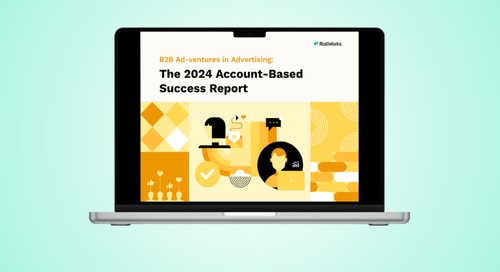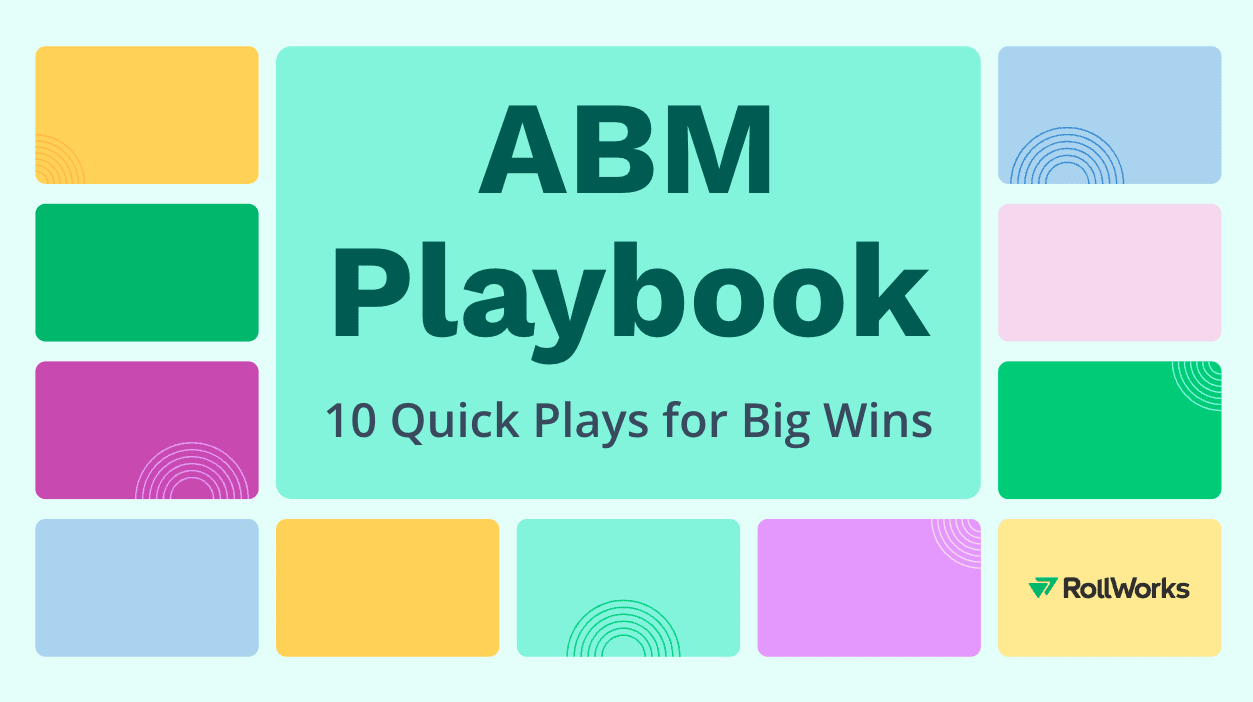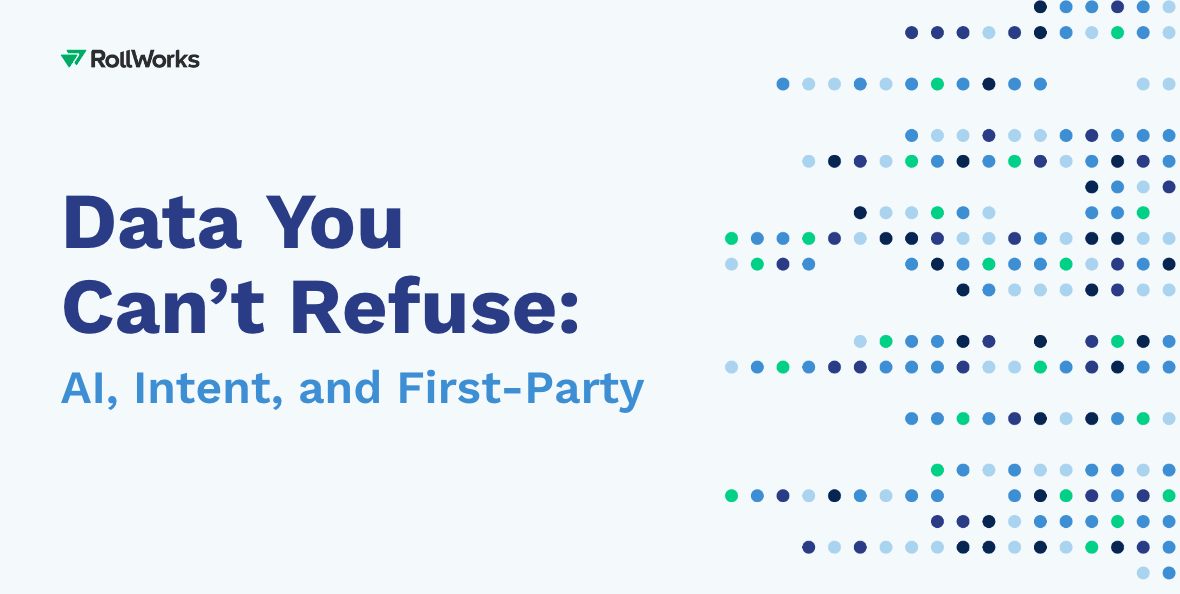For small marketing teams, success comes down to determination.
With limited resources, a small but mighty marketing team celebrates each win without getting complacent. They treat every success as a step towards something greater—a way to propel future growth.
Achieving growth as efficiently as possible is what we do at Enplug. We make enterprise-class digital signage for some of the world’s largest and most complex organizations, and we do it with a fierce five-person marketing team.
For us, the key to continued growth lies in maintaining an efficient and agile approach. To make this approach work—and scale each success into bigger results—we’ve made account-based marketing a core component of our toolset.
Here’s how our small team gets big results with account-based marketing (ABM).
Refine and extend inbound marketing
A healthy inbound engine shouldn’t make marketers complacent and deter them from branching out into new approaches.
At Enplug, we have a very successful inbound marketing program that accounts for the vast majority of sales-qualified leads in our pipeline.
But as our customer base grew and our inbound success matured, we met with an interesting opportunity: Our data showed that we were now the best fit for a specific set of customers and industries.
Armed with this realization, the question then became: How can we scale most effectively? In other words, How can we proactively and rapidly raise awareness with the companies that find the greatest value in our product?
For us and many teams who make similar discoveries, the answer is account-based marketing. We haven’t replaced our inbound engine, but we have brought ABM into the mix to amplify our results.
Here’s how that works
When you’re targeting enterprise customers, you’ll inevitably need to engage with multiple stakeholders across departments, each of whom serves a unique function with different pain points.
With inbound, the process is a lot like fishing with a single piece of bait, one line at a time. With ABM, our team puts multiple lures on the line to entice more than one fish in a single school to bite at the same time.
The key to driving meaningful engagement with each of these contacts is a tailored approach. For instance, an HR lead is usually interested in features that enable them to delegate content creation, but the IT team (who also needs to buy-in) cares most about network security.
With ABM, our team can personalize content with more precision than with inbound alone. As a result, we’re able to create new touchpoints, close deals faster, and build brand awareness more efficiently.
Build campaigns and programs around hyper-relevant pain points
Your team’s ability to adapt quickly to change can also have a major influence on growth.
When the pandemic first hit, we’d already built out our campaign with highly personalized display ads and were ready to launch.
But the immediate needs of our customers changed almost overnight. On our end, we needed to reduce our budget and ensure the highest ROI to remain competitive in an uncertain market.
Our challenge changed. We had been asking ourselves, How can we get bigger results? Now we were asking, How can our small team get outsized results in a new and challenging business landscape?
The solution was to document very clear verticals and personas to create new and highly targeted account-based plays.
We approached the task of finding our audience all over again in three steps:
- We re-identified target accounts based on demand and intent in specific verticals. Essential businesses that were able to remain open showed increased demand, so we fielded inbound requests with accelerated timelines and empowered buyers. We also discovered new remote work pain points our product could solve.
- We repositioned our content and offers to meet these new customer pain points. With the bulk of our target audience working remotely, our old segmentation became significantly less relevant. We now needed to segment based on an individual organization’s response to the crisis. Were they working on-site, remotely, or on a hybrid schedule?
- We executed and optimized quickly. In other words, we created new targeted account lists, messaging, creative, content, and budget allocations all under two weeks.
Finally, we launched campaigns to increase awareness with managers responsible for keeping employees informed at essential businesses.
At the top of the funnel, we shared ungated digital signage templates hosted on our blog for contacts to download. At the bottom of the funnel, we invited viewers to see how they could better protect their workers with digital signage by requesting a demo. We also personalized our ads by industry.
Invest in tools that power growth at scale
At Enplug, we’ve built a product that makes it easy to scale digital signage, and we’re equally focused on scalability internally.
With a five-person marketing team made up of a growth manager, an operations manager, and two graphic designers (plus me), we have to adopt strategies and tools that enable us to surface the value of our existing resources and data.
In this challenging environment especially, RollWorks and HubSpot were two critical tools that helped us achieve exactly that. In a matter of weeks, our team built a strategic program that ultimately had great reach.
Our results
In the first two months, we engaged four times (4x) as many accounts on our target list. Within four months, we saw a 56 percent increase in essential businesses with identified contacts and a 73 percent increase in Energy & Utility accounts engaged.
In addition to reaching more target accounts, our martech stack also enabled us to:
- Maintain sales and marketing alignment. With the HubSpot/RollWorks integration, our sales team knew exactly which accounts we were targeting.
- Streamline our operations. Running through the same platform makes budget allocation and reporting a lot less time-consuming.
- Take action quickly. As the pandemic and the market landscape changes from day to day, our team can segment our target accounts with different criteria in HubSpot to surface insights without leaving the platform.
Beyond tools, the most critical factor is our approach. As a small team, we embraced agility and adopted account-based marketing strategies that helped us amplify our successes into scalable growth. In the end, we think any team can do the same.
About the Author
More Content by Staisey Divorski, VP Marketing, Enplug































